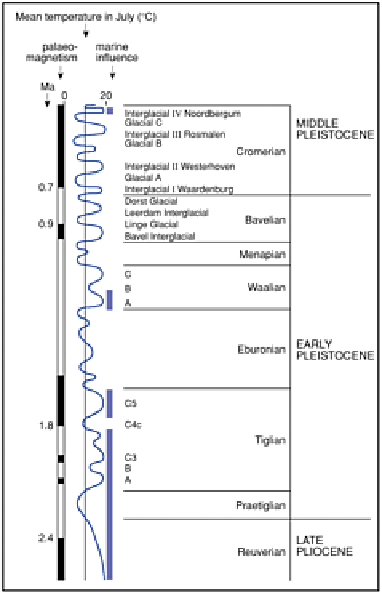Environmental Engineering Reference
In-Depth Information
(Plate 9.3). Unfortunately their requirements are often less precise, so they are not so
useful as those species with specific environmental needs.
Reconstructing former climate on the basis of proxy evidence like this is complex and
indirect. If we use plants, the communities need to be established from pollen evidence,
then the climatic interpretations have to be made from that. Errors can arise at both
stages, as climate is only one of a number of factors involved. A major problem is
selective preservation, as only certain environments are suitable for preserving pollen.
Figure 9.3
Estimated July temperatures during the early and
middle Pleistocene period, showing the oscillation of glacial
and interglacial conditions.
Source: After Jones and Keen (1993).
GLACIAL PERIODS
From the proxy evidence described above together with dating techniques, it is now
possible to determine with reasonable certainty the environmental conditions that have
prevailed over Earth within the recent geological past. Land and oceanic sediments
record clear evidence of numerous alternations between warmer and colder conditions
over the last 2 million years. At least eight such cycles have occurred in the last million

